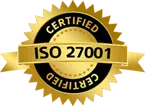How Intelgic’s Machine Vision AI is Transforming Color Quality Control Across Industries
Color consistency is one of the most critical quality attributes in manufacturing—yet it’s also one of the hardest to maintain. Human eyes fatigue, ambient lighting changes, and subtle differences in dyes, inks, coatings, and substrates can easily go unnoticed on a busy shop floor. These small variations often result in brand complaints, batch rejection, costly rework, or returns.

To address this challenge, manufacturers across the world are turning to automated Color Shade & Design Matching Inspection systems powered by machine vision and AI. Intelgic’s solution is one of the most advanced, providing pixel-level accuracy, repeatable color measurements, and precise design matching in real time.
This blog explores how the technology works, why it matters, and how industries are using Intelgic’s solution to eliminate subjective color evaluation forever.
Why Color Shade Variations Are So Difficult to Detect
At first glance, a product may appear acceptable to the human eye. However, small shade differences—even those below perceptual thresholds—can accumulate across batches. For brands that rely on consistent colors (such as packaging, apparel, furniture, laminates, ceramics, or consumer products), this inconsistency can be unacceptable.
Manual inspection suffers from:
- Subjectivity: every inspector sees colors differently
- Lighting variation: shifts in brightness or color temperature affect perception
- Fatigue: inspectors can't maintain accuracy for long periods
- Repeatability issues: decisions differ across shifts or operators
- Environmental influences: reflections, glare, shadows, texture
Machine vision overcomes these limitations by capturing objective, quantifiable, and repeatable color data.
Introducing Intelgic's Automated Color Shade & Design Matching Inspection System
Intelgic’s system uses high-resolution cameras, industrial lighting, and AI-powered software to compare each product against its Master / Golden Template. Every region of the product is analyzed for:
Color Analysis
Measures ΔE color difference values with scientific precision across all product regions.
Pattern Matching
Detects design shifts, logo mismatches, and print anomalies with pixel-level accuracy.
How the Technology Works
Importing the Golden Template
The QC team uploads a high-quality reference image or vector design. This becomes the standard for comparison. The template can be divided into smaller zones to enforce strict tolerances where necessary—like brand logos or specific color bands.
Controlled Image Capture
Products are imaged under consistent lighting inside a tunnel or enclosed chamber. This eliminates reflections and ensures stable environmental conditions. Telecentric or industrial lenses provide distortion-free imaging.
AI-Based Color & Pattern Analysis
The software uses advanced color science tools and machine learning to analyze the product:
- Converts colors into CIELAB or LCh color spaces
- Computes ΔE76, ΔE94, or ΔE2000 for each region
- Matches design patterns using feature analysis
- Compares edges, geometry, and textures
- Applies geometric normalization to correct for skew or rotation
This delivers unmatched precision—even for complex patterns or low-contrast materials.
Pass/Fail Decision & Marking
If any zone fails:
- The system marks the precise pixel location
- Highlights the defective region on the image
- Logs ΔE measurements and deviation values
- Sends alerts to the operator, PLC, or dashboard
This leads to immediate corrective action and zero ambiguity.
Reporting & Traceability
Intelgic's Live Vision AI software stores detailed inspection results, images, and measurements. Manufacturers can generate:
- Shift-wise and batch-wise reports
- Pareto charts of failure modes
- Image archives for customer audits
- Digital Quality Certificates (DQC)
Traceability becomes effortless and fully digital.
Applications Across Industries
Packaging & Labels
Ensures brand colors are identical across cartons, pouches, sleeves, and printed films.
Textile & Apparel
Detects shade variations in fabrics, prints, patterns, and stitched designs.
Wooden Panels & Laminates
Validates color consistency, grain pattern matching, and surface finish uniformity.
Ceramics & Tiles
Eliminates shade variation and pattern mismatch in printed floor and wall tiles.
Automotive Components
Checks printed graphics, color trims, and painted or molded surfaces.
Medical & Pharmaceutical
Ensures correct color coding and precise color reproduction on packaging or devices.
Why Automated Color Inspection is Becoming Essential
Customer Expectations Are Higher Than Ever
Brand owners demand perfect consistency across millions of units.
Faster Lines Need Faster Quality Control
Manual inspection simply cannot keep pace with high-speed manufacturing.
Machine vision provides reliable, traceable records.
Reducing Waste Saves Money
Catching defects earlier means fewer rejects and rework.
Industry 4.0 Integration
Color and design data can be fed directly into MES/ERP systems for analytics.
The Advantages of Intelgic's System
Real-World Outcome: Zero-Compromise Color Quality
Manufacturers adopting Intelgic's system achieve:
- Up to 90% reduction in color-related customer complaints
- Consistent color grading across all production shifts
- Improved brand protection through controlled visual standards
- Higher throughput by eliminating manual inspection bottlenecks
- Better traceability and documentation with automated reports
Final Thoughts
Color consistency and design accuracy are no longer optional—they’re essential for maintaining brand value and customer satisfaction. Intelgic’s Color Shade & Design Matching Inspection system brings scientific precision to an area traditionally dominated by subjective visual judgment.
With AI-powered color measurement, pattern matching, and automated documentation, manufacturers can achieve zero-defect color quality at scale.
If your manufacturing process relies on tight visual quality standards, Intelgic’s solution is a game changer.


